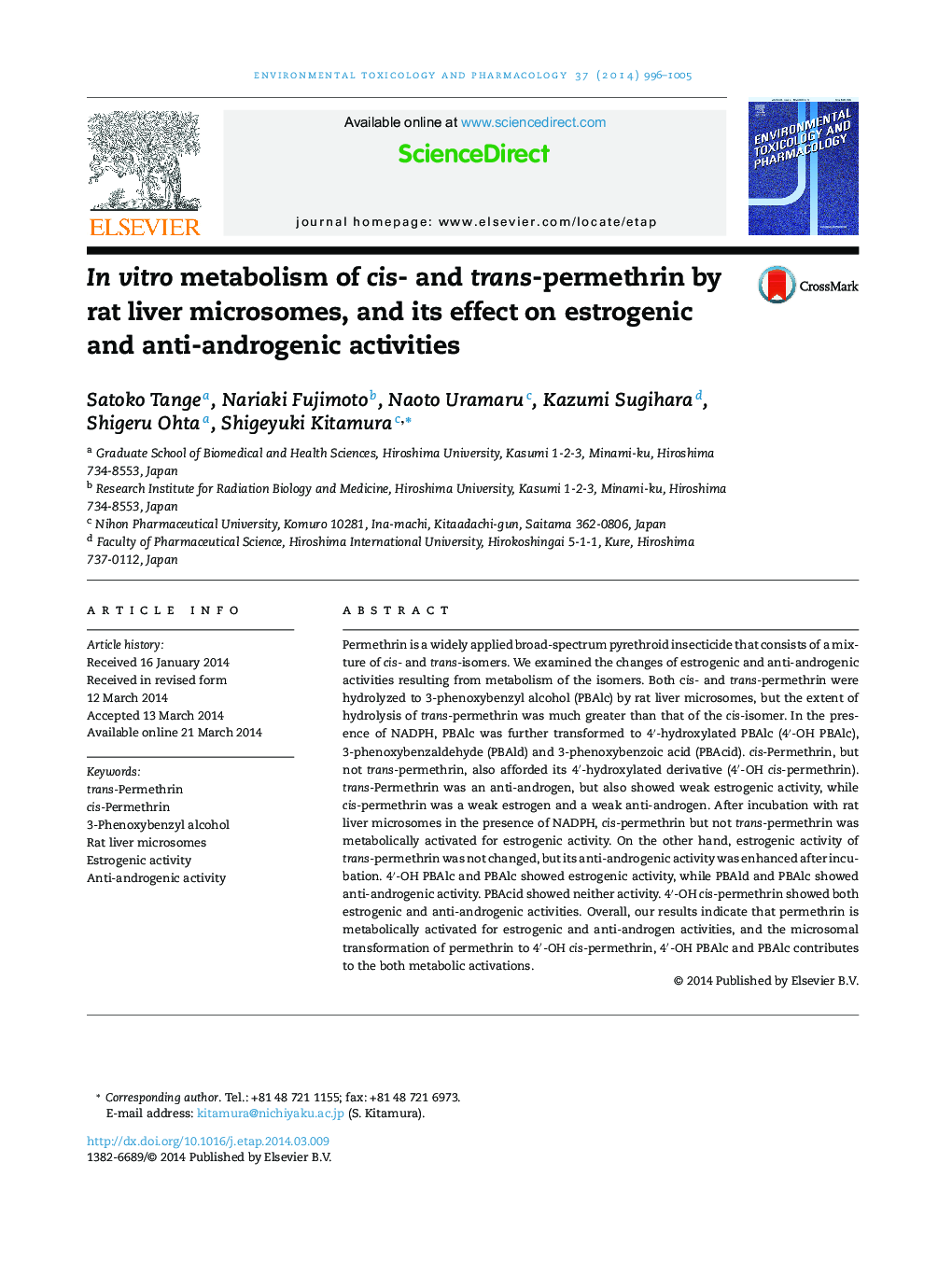| Article ID | Journal | Published Year | Pages | File Type |
|---|---|---|---|---|
| 5849105 | Environmental Toxicology and Pharmacology | 2014 | 10 Pages |
Abstract
Permethrin is a widely applied broad-spectrum pyrethroid insecticide that consists of a mixture of cis- and trans-isomers. We examined the changes of estrogenic and anti-androgenic activities resulting from metabolism of the isomers. Both cis- and trans-permethrin were hydrolyzed to 3-phenoxybenzyl alcohol (PBAlc) by rat liver microsomes, but the extent of hydrolysis of trans-permethrin was much greater than that of the cis-isomer. In the presence of NADPH, PBAlc was further transformed to 4â²-hydroxylated PBAlc (4â²-OH PBAlc), 3-phenoxybenzaldehyde (PBAld) and 3-phenoxybenzoic acid (PBAcid). cis-Permethrin, but not trans-permethrin, also afforded its 4â²-hydroxylated derivative (4â²-OH cis-permethrin). trans-Permethrin was an anti-androgen, but also showed weak estrogenic activity, while cis-permethrin was a weak estrogen and a weak anti-androgen. After incubation with rat liver microsomes in the presence of NADPH, cis-permethrin but not trans-permethrin was metabolically activated for estrogenic activity. On the other hand, estrogenic activity of trans-permethrin was not changed, but its anti-androgenic activity was enhanced after incubation. 4â²-OH PBAlc and PBAlc showed estrogenic activity, while PBAld and PBAlc showed anti-androgenic activity. PBAcid showed neither activity. 4â²-OH cis-permethrin showed both estrogenic and anti-androgenic activities. Overall, our results indicate that permethrin is metabolically activated for estrogenic and anti-androgen activities, and the microsomal transformation of permethrin to 4â²-OH cis-permethrin, 4â²-OH PBAlc and PBAlc contributes to the both metabolic activations.
Keywords
Related Topics
Life Sciences
Environmental Science
Health, Toxicology and Mutagenesis
Authors
Satoko Tange, Nariaki Fujimoto, Naoto Uramaru, Kazumi Sugihara, Shigeru Ohta, Shigeyuki Kitamura,
